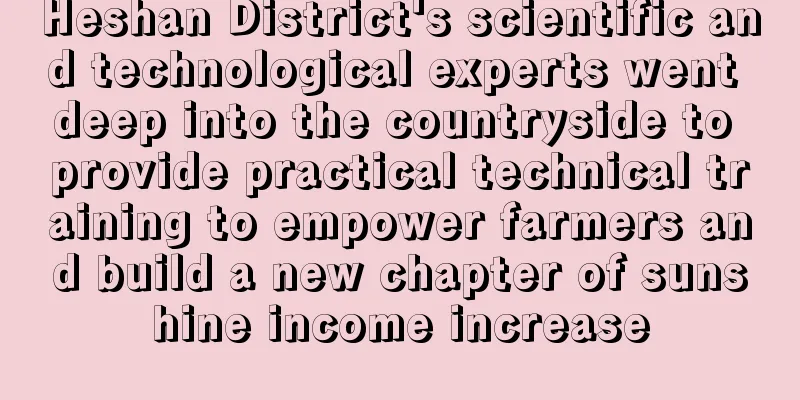How to grow potted lavender

Potted plant managementLavender is a perennial semi-lignified herb. It is best cultivated in the field in areas with high, dry terrain, good drainage and convenient irrigation. Lavender has very strict requirements for soil drainage. A continuously hot and humid soil environment will cause the roots to not have enough air to breathe and grow poorly, or even suddenly die of the entire plant. When planting lavender in pots, in order to prevent the soil from being too wet, it is recommended to use inexpensive unglazed pots (clay pots) with good drainage and air permeability. Ceramic pots or smaller plastic pots can also be used for large-scale production to avoid loss of watering control, which is not conducive to the growth of lavender. It is not advisable to use large pots. Only when the lavender grows to a considerable size should it be cultivated in large containers. Prepare the culture soilThe culture soil for lavender potting should be loose, have good water permeability, be able to retain water and fertilizer, be fertile, weakly alkaline, and free of the growth and mixing of harmful microorganisms and other harmful substances. When preparing the culture soil for lavender, avoid using acidic soil. You can choose turf soil, garden soil and sandy soil in a ratio of 4:4:2 to prepare the nutrient soil, or use compost soil, wood ash, etc. to prepare the nutrient soil. BasinProcess the selected flower pots. If they are newly fired clay pots, they must be soaked and annealed first. All old pots must be disinfected before use to eliminate pathogens and insect eggs. Choose a suitable processed flowerpot, cover the drainage hole at the bottom of the pot with a piece of broken potting soil, with the concave side facing down, then fill in a layer of drainage material (broken potting soil, sand, etc.), and then fill in a layer of culture soil. Hold the seedling with your left hand and place it in the appropriate position in the pot. Fill the culture soil around the roots of the seedling and press it tightly with your hands. Then use a watering can to water it thoroughly. Place it in the shade for a few days to slow down the growth of the seedlings, and gradually place it in a place with sufficient light. RepottingWhy change the pot?As the plant in the pot continues to grow, you should constantly replace it with a larger pot to replenish and update nutrients to meet the needs of the lavender's continued growth and development. When repotting, trim away diseased and damaged roots to promote the growth of new roots. Repotting is more frequent during the seedling stage, once a year, and then generally once every 2 to 3 years. When repotting, try to minimize root damage and repotting should be done after the flowers have faded. At the same time, spray methyl thiophanate to prevent and control diseases. How to change potsSpread the fingers of your left hand, place them on the base of the plant on the surface of the pot, lift the pot upside down, and gently tap the edge of the pot with your right hand to remove the soil ball. Do not break the soil ball. Cut off a part of it appropriately, fill some culture soil at the bottom of the pot, place the soil ball in the center and fill it with soil, and finally press it down slightly. After repotting, you should water the plant sufficiently for the first time to ensure that the roots are in close contact with the soil. Then keep the soil moist, but not too much water. Because the root system is injured after repotting, the absorption is reduced, otherwise the injured roots will rot. The first few days after repotting, it should be placed in a shady place to slow down the growth of the seedlings. |
<<: Why don't plum blossoms bloom?
>>: Management methods for cyclamen during the budding period
Recommend
How to make the copper coin grass germinate quickly
The germination environment of copper coin grass ...
How to make honeysuckle easy to root by cutting propagation, how long does it take for cutting honeysuckle to take root
1. Methods for easy rooting of cuttings 1. Cuttin...
Can ranunculus be grown indoors?
1. Can be planted Although anemone is poisonous, ...
What to do if smooth sailing withers
1. Hydration and Moisturizing Reason: If you don&...
Why is the loquat tree dropping leaves?
1. Excessive watering 1. Reason: If you water the...
Differences between White Clover and Oxalis
1. Leaf Difference The leaves of white clover hav...
Just learn a few simple tricks and your bougainvillea can grow into a waterfall and bloom into a sea of flowers!
How to water bougainvillea Water once every five ...
The difference between Gorgeous Windmill and Debbie
1. Differences in plants The Ornate Windmill is a...
Winter cucumber planting technology
Cucumbers are grown in a large area in China. Alt...
What is Kudingcha plant?
1. What is the plant? Kudingcha is a plant of the...
Is Dendrobium officinale poisonous? Can Dendrobium officinale be soaked in water and drunk?
1. Is it poisonous? Dendrobium officinale is non-...
When is the best time to plant autumn corn in the south?
Autumn corn planting time in the south In the sou...
The efficacy and function of aloe vera, how to eat aloe vera
1. Efficacy and Function 1. Protect the intestine...
The growing environment and local conditions of watermelon
Watermelon growing environment and conditions Wat...
Can carnations be placed in the bedroom?
1. Is it suitable? The answer is of course it is ...









